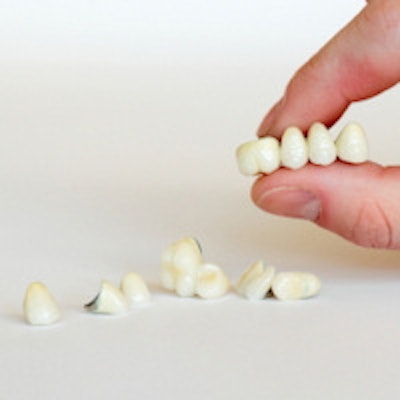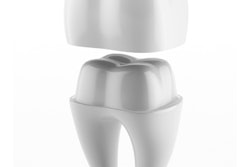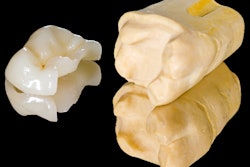
A study of various dental restorative CAD/CAM composites has found that lithium disilicate glass ceramic had the highest flexural strength, but all the materials were found to be satisfactory in terms of their mechanical and optical properties.
Overall, the German researchers found that CAD/CAM composites presented moderate flexural strength and high translucency, as well as exhibited antagonist-friendly behavior. On the materials side, they reported that glass ceramic demonstrated the most favorable discoloration rate and lowest two-body wear.
"From the clinical point of view and in contrast to common clinical opinions, all tested CAD/CAM composites showed satisfactory mechanical and optical properties," wrote lead author Bogna Stawarczyk, PhD, and colleagues (Journal of the Mechanical Behavior of Biomedical Materials, October 19, 2015).
Mechanical and optical properties
In this in vitro study, the researchers, from the department of prosthodontics at the Ludwig Maximilian University of Munich Dental School, wanted to test the mechanical and optical properties of the following:
- CAD/CAM composites: Lava Ultimate (3M ESPE), Cerasmart (GC), Shofu Block HC (Shofu), and two other CAD/CAM composites from Ivoclar Vivadent and Coltene/Whaledent
- A hybrid material (Vita Enamic, Vita Zahnfabrik)
- A leucite (IPS Empress CAD, Ivoclar Vivadent)
- A lithium disilicate glass ceramic (IPS e.max CAD, Ivoclar Vivadent))
The researchers measured each material's three-point flexural strength, two-body wear, discoloration rate, and translucency.
Flexural strength was investigated according to the International Organization for Standardization (ISO) 6872:2008 standard, which "specifies the requirements and the corresponding test methods for dental ceramic materials for fixed all-ceramic and metal-ceramic restorations and prostheses." The researchers cut 240 bars into 30 specimens for each material group.
Two-body wear was analyzed in a chewing simulator using human teeth. The researchers prepared 120 combinations of CAD/CAM material specimens and tooth antagonists, resulting in 15 specimen combinations for each material group.
A qualitative analysis of wear was made using a 3D scanner and associated matching software. The discoloration rate was measured after 14 days of storage in a mixture of cress, curry, red wine, and distilled water. The translucency of the materials was measured in a spectrophotometer (400-to 700 nm wavelength). The team prepared more than 365 disk-shaped specimens, resulting in 48 specimens for each material group.
As noted, IPS e.max CAD showed the highest flexural strength (p < 0.001), followed by Lava Ultimate. Vita Enamic and IPS Empress CAD had the lowest strength scores (p < 0.001). The highest antagonist wear was observed for the tested glass ceramics and the hybrid material (p < 0.001). Glass ceramics showed lower discoloration rates than the CAD/CAM composites (p < 0.001).
The authors had hypothesized that the wear resistance of composites and glass ceramics would be similar. However, this was rejected after they noted that a disadvantage of the CAD/CAM composites (except for the Coltene/Whaledent composite) in comparison with glass ceramics was their lower material abrasion resistance.
Clinical longevity?
The authors concluded, within the limitations of their study, the following:
- CAD/CAM composites showed higher flexural strengths than leucite ceramic and the hybrid material Vita Enamic, but lower ones than lithium disilicate ceramic.
- Only one CAD/CAM composite (Coltene/Whaledent) showed comparable wear properties with the tested glass ceramics and the hybrid material. The remaining CAD/CAM composites presented higher material loss than glass ceramics.
- Glass ceramics and the hybrid material showed higher human tooth antagonist wear than the CAD/CAM composites.
- Glass ceramics showed lower discoloration rate than CAD/CAM composites.
While "no clinical data regarding the clinical longevity of these materials is available ... they may at least be used for medium-term restorations," noted the authors, adding that long-term clinical studies are urgently needed.



















